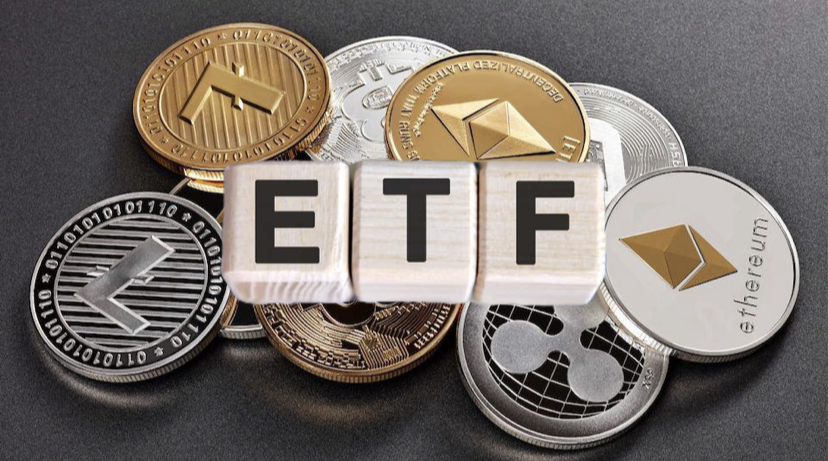In the midst of strategizing, we can win from a thousand miles away. Hello everyone, I am Lin Chao, a global financial market observer, focusing on cryptocurrency market analysis, bringing you the most in-depth trading information analysis and technical teaching.

Since Lin Chao started posting, I have received many similar private messages, the core content of which is roughly: "Teacher Lin, I am stuck, can you help me get out? At what point should I operate to resolve this position?" In fact, I believe the core issue of being stuck is not the trading itself, but rather related to one's own execution ability. Today, I will talk to you about how to improve execution in trading.
To achieve continuous and stable profits in trading, in addition to having a high win-rate trading strategy, strong execution ability is also essential. The later you are in your trading career, the more important execution will be in trading. In this industry, there are many people who "do not follow the strategy." Many people "clearly know what to do, but just can't control their hands"—these are all manifestations of poor execution.

Execution is not only related to trading; it is actually a part of human nature, reflected in all aspects of life. Therefore, to improve execution in trading, we need to start not only from trading but also from various aspects of life, training ourselves to become a person with strong execution. For example, if you set a rule to turn off the lights and sleep at 12 AM, but in reality, you scroll through your phone until 1 AM every night—this is a manifestation of poor execution. Not following the rules you set for yourself reflects in trading, ultimately leading to problems in executing strategies. Another example: you plan to run on the treadmill for 40 minutes every day, but every time you reach 35 minutes, your sore calves urge you to rest, and the cola in the fridge starts to tempt you, so you hit the slow down button, thinking that running for 35 minutes is still a good workout—little do you know, it is these small details that create cracks in your execution. Perhaps scrolling through your phone a little longer before bed or running 5 minutes less may not bring noticeable changes to your life, but in trading, once you start cutting corners in executing your strategy, you are likely to encounter fatal problems.

How do we understand "being stuck"?
I believe 90% of users understand the meaning of "being stuck" and have deeply experienced the feeling of being trapped. However, in my view, the term "being stuck" is widely used but is actually a very low-level expression and one of the most common mistakes in this industry. Being stuck in the market indicates that you do not have a clear stop-loss plan and cannot face your failures. "Being stuck" itself is a manifestation of insufficient execution.
Some people think that as long as they haven't closed their positions, it is equivalent to having no loss—however, what is the difference between this and burying your head in the sand? Those who cannot execute their plans cannot profit from the market in the long run.

So what should the correct trading posture look like? From the moment you enter the market, you should decide on your stop-loss position. If the market subsequently falls below this price, you should close your position without hesitation. Moreover, the setting of the stop-loss price should follow objective market logic, not your subjective feelings.
For example, "If I lose 10%, I will exit," or "If I lose xxx amount of money, I will exit," these are all incorrect stop-loss methods—your stop-loss should not be anchored to your psychological price but should be anchored to technical levels.

There are many key price levels in the market. Once the candlestick crosses these key levels, it can easily trigger panic, leading to a new market direction, and these key levels are where we should set our stop-loss. A few simple examples: the position of the 20MA in a trending market, the last low or high point of market fluctuations, market resistance and support levels, etc. Once these levels are breached, it can easily cause a shift in the balance of power between bulls and bears, significantly reducing the likelihood of the price returning to your "break-even" level in the short term. Therefore, these levels are often used by traders as stop-loss points.

Now, if after you exit with a stop-loss, the price returns to your entry point, and you could have achieved a zero-loss exit, but instead incurred a loss due to the stop-loss action—does this mean you should not set stop-losses?
No. This usually means that your method and position for setting stop-losses are problematic, but it does not mean that the act of setting a stop-loss itself is wrong. Therefore, we should view these as two separate actions. There is nothing wrong with stop-losses; the problem lies in the judgment of the stop-loss points. Throughout our long lives, we will make thousands of stop-loss decisions. Throwing away expired food is a stop-loss, quitting a job is a stop-loss, breaking up with a girlfriend (or boyfriend) is also a form of stop-loss. Execution and stop-loss are not terms exclusive to the financial industry; they are universal life wisdom. In the market, which is unfamiliar to most people, one must maintain strict execution while also implementing reasonable stop-losses. Like other life skills, this is something we need to gradually refine and improve.

Therefore, to strengthen execution in trading, one must train their self-control in all aspects of life—strictly executing planned tasks and not casually breaking established rules, so that one can become a person with strong execution. Only those with strong execution can ultimately succeed in trading and become leaders in the market.
The global market is ever-changing, the world is a whole, follow Lin Chao, and gain a top-tier global financial perspective

For real-time consultation, please follow the public account: Lin Chao on Cryptocurrency.
免责声明:本文章仅代表作者个人观点,不代表本平台的立场和观点。本文章仅供信息分享,不构成对任何人的任何投资建议。用户与作者之间的任何争议,与本平台无关。如网页中刊载的文章或图片涉及侵权,请提供相关的权利证明和身份证明发送邮件到support@aicoin.com,本平台相关工作人员将会进行核查。




